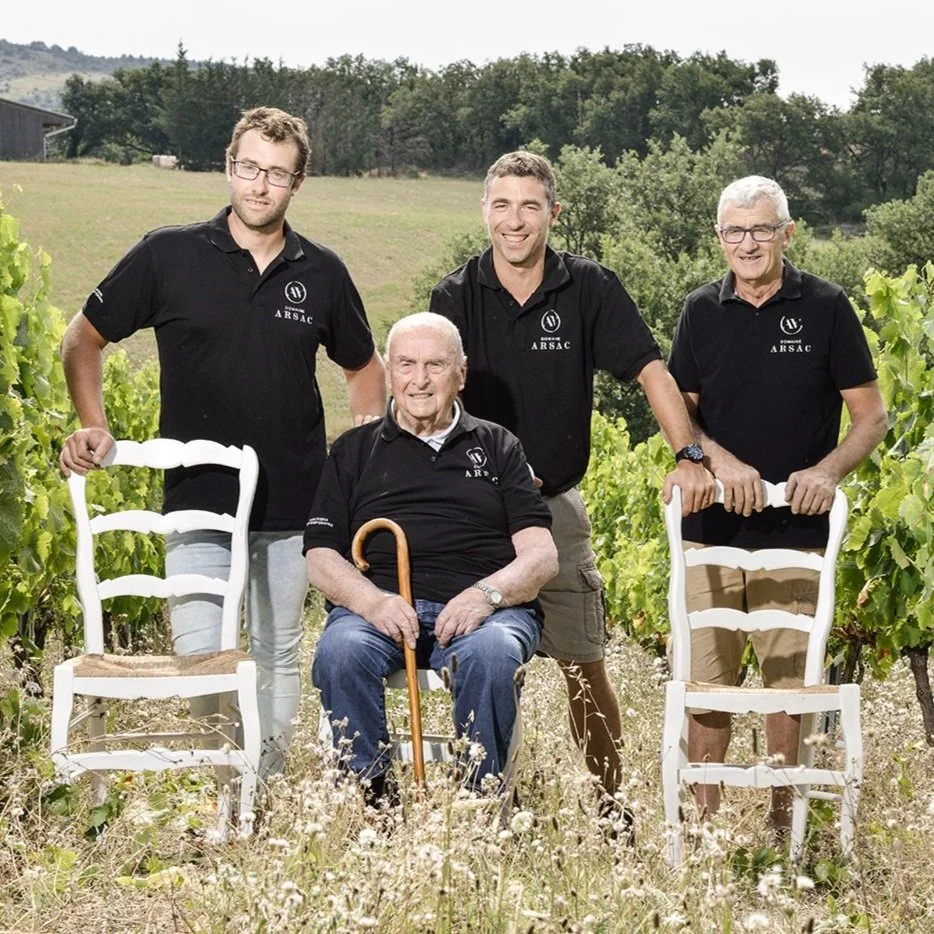In 1945, after years spent as a prisoner of war, Gaston Arsac was finally able to return to his land, amidst the rolling hills that define the landscape in the upper section of the Southern Rhone valley. Soon after his return, he married Therese and the couple purchased a farm in a bucolic area, locally called La Chaumette. At that time, it was a self-sustaining estate and, for that purpose, grew a variety of crops and raised animals.
Driven by a passion for viticulture and winemaking, Gaston planted the first vines on the rugged slopes of La Chaumette shortly after moving into the farmhouse. Little did he know that his son Joel, and later on grandsons Sebastien and Dimitri, would not only continue with the trajectory indicated by Gaston, but also expand the vineyard acreage to the actual 14 hectares and implement organic and biodynamic practices. The latter was a non-negotiable step for Dimitri and Sebastien who are strong advocates for an agriculture free of chemicals and a return to an ancestral approach. The vineyards are worked with horses, and the only natural fertilizers used are organic herbal infusions and compost made with the organically raised estate’s cattle. All of the vineyard management operations, harvest included, are carried out manually by the Arsac brothers.
The domaine’s parcels are scattered on a hilly plateau, part of the Coiron massif, at an average altitude of 1,250 feet of elevation. The soils across the property are very varied, with pockets of clay and limestone, alternated to granite and volcanic element. Chardonnay, and Viognier thrive on the calcareous terrain while Sauvignon Blanc and the red varietals are planted on basaltic hillsides. Grapes are carefully double sorted, first in the vineyard and then once they reach the cellar. Only indigenous yeasts are used for the fermentation of the wines, and depending on the cuvvee, the wine will then age in concrete vats, clay amphoras, and untoasted oak barrels. All the wines are bottled with minimum sulfur.
